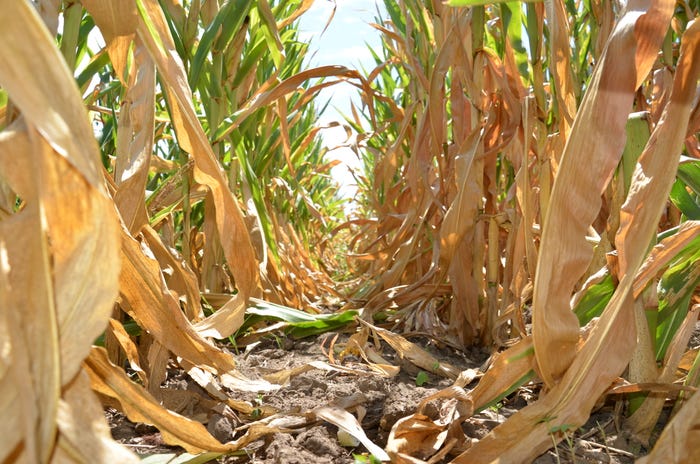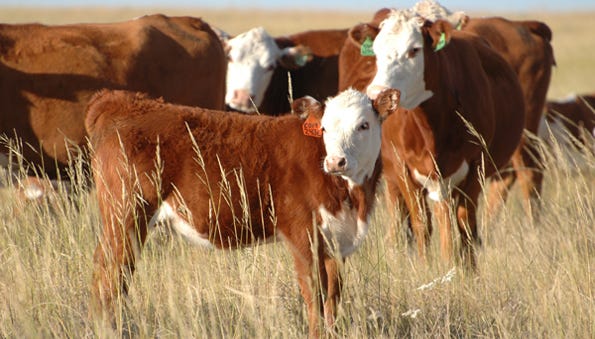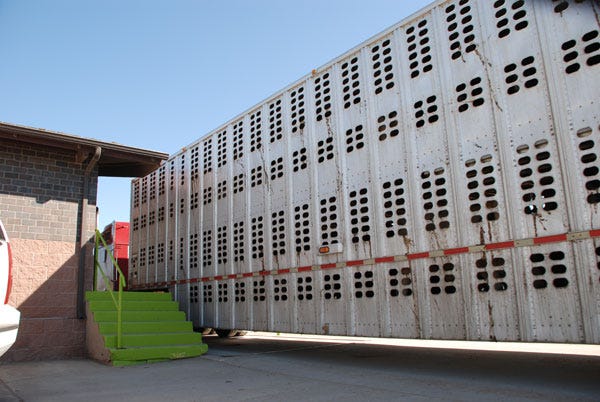6 Trending Headlines: How to manage horn flies; PLUS: Can animals predict the future?
The second wave of horn flies is about to hit. Are you ready? That and more awaits you in this week’s Trending Headlines.

How to successfully manage peak season horn fly populations
"We're talking, coming up here pretty quick, late August - early September, when the temperatures start to go down, the humidity starts to rise a little bit. It's prime time for another peak in horn fly population," says Extension Veterinary Specialist A.J. Tarpoff of Kansas State University.
Over the course of a typical year, there are two seasons in which horn fly populations tend to peak. And one of them is looming—those seasons generally occur in the spring and late summer.
Tarpoff says as this subsequent wave of horn flies approaches, it is important to have a plan in mind to control the population of these bloodsucking pests. He recommends considering what you have already done during the spring peak, and switch up your mode of action with a different application and different chemical class. By doing this, he says you will stop flies from building up a resistance to your preferred control methods, according to the Oklahoma Farm Report.
Click here to read and hear more on Tarpoff’s tips for horn fly control.
Mycotoxin considerations for weather-damaged feedstuffs

This growing season has been a challenge across the upper Midwest. Whether crops have been hit with drought or hail, the odds are that we are going to see an increase potential for feed contaminants such nitrates or molds which cause mycotoxins.
Conditions that promote the production of the mycotoxin aflatoxin are hot weather and drought stress. The prime conditions for this fungal toxin development are days when the temperature is greater than 70 degrees F at night and the corn is in the latter stages of grain fill during drought stress. The mold found on corn is gray-green to olive-green in color, and the two most common fungi that produce this toxin are Aspergillus flavus and Aspergillus parasiticus.
Click here to read more from South Dakota State University.
Can animals predict the future?

Animals may not tell you if you’ll win the lottery, but they can sense when major events such as earthquakes are pending, researchers say.
Martin Wikelski is the kind of guy who drives toward an earthquake. Wikelski isn't a seismologist or a Superman type. He's the migration expert from Germany's Max Planck Institute for Ornithology—an animal tracker. He tests whether sharp changes in animal behavior, such as herd migration, can predict seismic and other events.
When an earthquake hit the Italian town of Visso last year, he rushed to the scene. A farmer whose farm had been badly hit let Wikelski rig up sensors on six cows, five sheep, pairs of dogs, chickens and turkeys, and a rabbit, reports Bloomberg Businessweek.
Pay dirt. Days later, Wikelski's sensors detected "dynamic body acceleration," meaning the animals expended dramatically more energy than usual as many as 14 hours before the aftershocks hit, at times when they'd normally be asleep or docile.
NCBA warns of risks in changing NAFTA

Testifying at a U.S. House Agriculture Committee hearing recently, Kendal Frazier, CEO of the National Cattlemen’s Beef Association, said his organization strongly supports the North American Free Trade Agreement (NAFTA) because it has developed Canada and Mexico into two important export markets for U.S. beef — about $1 billion each in annual sales, reports Capital Press.
“While there may be calls from other segments of agriculture and other industries to update or renegotiate the terms of NAFTA, we strongly encourage our negotiators to focus their efforts on those specific areas and leave alone the terms of NAFTA that have greatly benefited the U.S. beef and cattle industry,” he said. “Quite frankly, it is difficult to improve upon duty-free, unlimited access to Canada and Mexico,” he said.
Forage quality on rangelands is dropping

Declining forage quality is costing ranchers almost $2 billion a year, and there’s no sign of the downward trend changing. That’s what a new study from Texas A&M says. Nutrient content on unimproved native rangelands, especially protein, is dropping due to increased drought, higher levels of carbon dioxide in the atmosphere and sustained nutrient loss from grazing, reports Onpasture.com.
Manure samples arrive at the Grazing Animal Nutrition Lab at the Texas A&M AgriLife Research and Extension Center in Temple. The look at manure samples collected over a 20-year span showed that digestible organic matter and crude protein quality were declining. Over 20 years, available crude protein decreased 1%, which amounts to an average 10-pound loss per head without supplemental feed.
Should animal disease traceability programs be mandatory?

While a recent case of atypical BSE in an 11-year-old cow proved to be nothing more than a momentary hiccup, it did have one impact. Colin Woodall with NCBA says it has brought the issue of animal disease traceability programs front of mind for the cattle industry, according to the Oklahoma Farm Report.
"It definitely has reenergized the whole discussion of whether or not these programs need to be mandatory," Woodall says. "I think it showed that the traceability that we have in place is useful. It may not work as quickly as a lot of people would like it to, but it does work."
Woodall shares that there has been a lot of internal discussion at NCBA about the matter and says the issue was even addressed at the organization's recent business meeting this summer. He says NCBA's policy was revised, where the word "voluntary" was omitted from their policy on animal ID and traceability. That reflects NCBA's change in posture—now more open and not immediately opposed to discussion on mandatory traceability programs.
Click here to read and hear more.
About the Author(s)
You May Also Like
.png?width=300&auto=webp&quality=80&disable=upscale)


